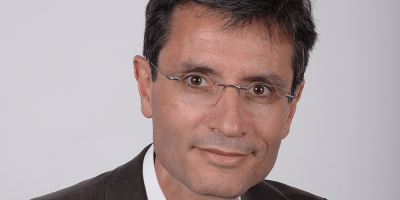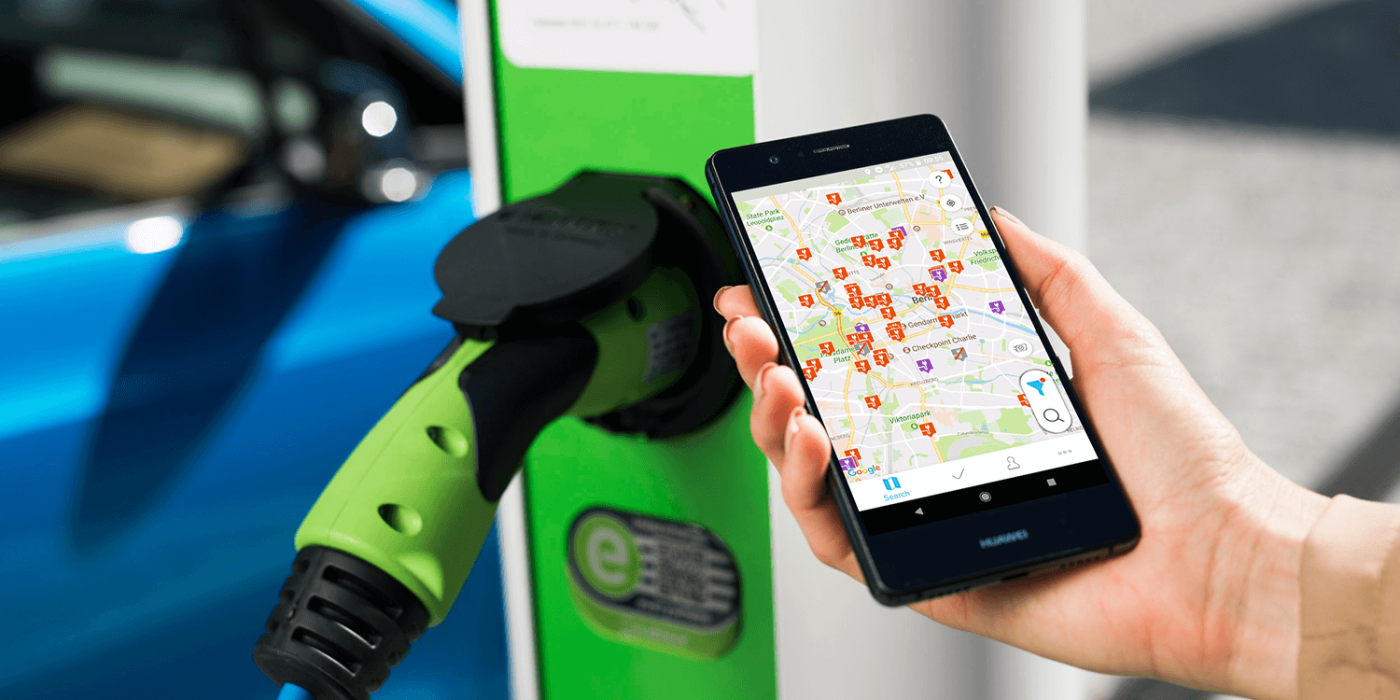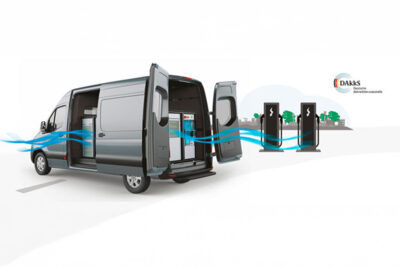Interview inter-roaming: Christian Hahn of Hubject & Gireve CEO Bruno Lebrun
As the e-mobility market in Europe approaches adolescence, the option to charge anywhere without having to sign up for multiple providers – roaming, in short, becomes crucial. So we set up a digital meeting with the minds behind two of Europe’s longest-standing providers.
The CEO of Gireve, Bruno Lebrun and Hubject CEO Christian Hahn here share their business positions and views on EU regulation and of course inter-roaming, where they agree to disagree at times.
* * *
Gireve and Hubject are acting in the same market as e-mobility roaming platforms. With ever more players entering the market and people paying by credit card, can you begin with summarising your market proposition for what you call eroaming?
Bruno Lebrun, CEO of Gireve: The key assumption behind our business is that charging an EV requires connected services delivered by an e-mobility service provider (eMSP). Direct payment with credit cards cannot be the only option for a very simple reason: unlike filling a tank with gasoline which lasts a minute or so, it takes you from 30 mins to several hours to charge an EV. During that time, you will be doing something else: shopping, sleeping or working. While your car is charging, you want to be informed in real-time of what’s happening and how much it will cost you. So eMSPs provide connected services that keep you informed. A credit card doesn’t. Same for booking or smart charging that will soon require to identify the EV driver and the car itself. In other words, charging an EV is not just paying for kWh.
Christian Hahn, CEO of Hubject: As we know, the future digital EV ecosystem is driven by numerous companies, so our platforms enable the business cooperation between those numerous market players for the benefit of the EV driver. Having subscribed to only one e-mobility service provider, you will be able to charge your EV anywhere at any time and receive one invoice at the end of the month. This is especially relevant, as the future emobility market will not only consist of large companies, but also of a lot of SMEs, start-ups and companies from different industries – and all of them need to be able to collaborate based on a level playing field to offer services in an efficient way.
That sounds great, in theory. So let’s talk about the reality in Europe – the mobile phone market, where the EU regulated roaming for end customers comes to mind. Is this something that could happen to your industry too?

Hahn: It’s important to keep in mind when talking about eroaming fees, we need to separate between charges on the B2C and B2B level. So Gireve’s business model and ours at Hubject are focused on B2B. Therefore, like in the mobile phone industry, we’re still allowed to have eroaming fees between businesses. We are not selling any end-customer services directly. This also means we are not able -or even allowed – to influence the price of all our B2B clients, which they are asking from the B2C clients. There could be some regulation at some point, however, and that’s also something we would like to show to the market here, that it’s not really needed because our solution could be used – we both worked on this topic. We are collaborating, even if we don’t always share the same opinion.
Networks and charge point operators in Europe also have bilateral or other cooperation agreements. What is the added value of your platforms?
Lebrun: A bilateral technical IT connection between a CPO and an eMSP is often mentioned as a back-up option to eroaming platforms. This is like comparing apples to oranges. As such, bilateral interface, through OCPI, for example, will never help manage the complexity of contractual and operational relationships that need to be established between several hundreds of operators. A platform does. For a Charge Point Operator, way beyond the choice of an IT protocol, the critical question is as simple as a “make” or “buy” trade-off: What’s the best option to manage my multiple connections with my eMSP partners? Am I able to operate at a reasonable cost the legal negotiation of a roaming agreement, the IT set-up and its monitoring over time, the data synchronization, the management of incidents that are bound to happen? Or is it worth outsourcing part of it? If an eroaming platform can do that for me at a lower cost, then, why would I bear that burden?
Hahn: Indeed, the customer needs to choose the solution, which fits their business model best. As we have seen with right now about 600 companies working with Hubject, we understand that the markets well receive the value of a solution like ours. Keeping in mind, what Bruno just stated on efficiency and scalability, an open business framework, where all companies with different company sizes and budgets are able to work together is what makes an attractive option to use an eroaming platform.

There are still challenges, of course. Can you tell us which issues you are working on nowadays?
Lebrun: It is to raise the roadblock we are facing to eroaming in Europe. So one of those blocks is the differences of regulations. And in some country the lack of regulation or even incentive to eroaming. Even if we already see a clear momentum in this direction, here and there in Europe, some charging systems are still closed to third party eMSPs, making it mandatory for the end-users to go through a designated operator, usually the network owner, to access their charging points. On the one hand, this creates monopolies or oligopolies; on the other hand, it’s a real burden for the EV drivers to manage multiple contracts, access cards, mobile apps and invoices. If we want the industry to take up speed, EU regulation could act upon it: in France for example, most publicly accessible charging networks were made interoperable within two years for the benefit of the EV drivers. In other countries like the Netherlands, a regulation was not necessary to deploy eroaming for seamless and nationwide access to all networks.
Hahn: Yes, I agree. In some markets, network operators are selling a charging session to the end customer. In the rest of Europe, most countries have split up these roles. So we have charging operators and mobility service providers, and they can be independent of each other. And that is a widely used model in France, Germany and everywhere else in Europe. Still, different regulatory systems hinder a fast and easy establishment of international EV business models in a European market.
Can you give us an example?
Hahn: An example is the sales tax regulation, which every eMSP in Europe needs to respect, which is somehow very challenging in a still small market as it is not unified. Besides, we are seeing that the market participants more and more accept the concept of eroaming itself but what we are lacking is a convenient solution for companies, who want to work with various eroaming providers, based on a single B2B contract. We believe that enabling inter-roaming – using all eroaming solutions through just one business and data connection – would help the whole market.
Yes, let us speak about inter-roaming, Gireve and Hubject have been trying to work on this together for years, also in the EU R&D project NeMo which came to an end last October. What is the outcome?
Lebrun: The scope of the NeMo project is quite large. It dates back to the early stages of this industry in Europe. In 2014, the shareholders of both our companies set up a series of meeting with different stakeholders like CPOs and eMSPs to discuss the conditions under which the EU eroaming platforms could be interconnected via an inter-roaming solution. The goal was simple: to allow an eMSP connected to one platform to get access to the charging points of a CPO connected to another. At that time, 4 to 5 potential platforms were under development. It took some time to clarify the concept further. In 2016, Hubject and we at Gireve finally teamed up to push forward the development and experimentation of the “inter-roaming” feature, as a response to a Horizon 2020 call for proposal. Three years later, within NeMo, we developed this inter-roaming capability. We’ve proved that it’s working well and that it might be applied when NeMo as hyper-network goes to the market.
Hahn: Part of the discussion was those market participants should have the possibility to choose their preferred solution for eroaming. This choice can be based on factors like the price of usage, but also the offered functionalities, the available service levels, the market share but in every case it needs to be a choice of the market player. So, NeMo was a start to discuss solutions between us. Easy to imagine that this discussion was not an easy one. Even though we found different solutions and are preferring different approaches, still I’m satisfied, that we defined, developed and tested and validated solutions, which we can offer now to market participants.
What kind of differences do you mean?
Lebrun: The market need has changed since 2014. Contrary to what we thought a few years ago, the number of eroaming platforms keeps very limited and most European operators, willing to secure their sourcing, get connected to two or even three very easily. CPO & eMSP don’t really seem willing to have just one connection. Most of them prefer to secure their eroaming services, by having at least two platforms connected, and even direct connections on top. I would also add that this interconnection incurs additional operational costs and is quite difficult to supervise, to say nothing about the business model of the platforms behind it, therefore, although Gireve is considering inter-roaming as an open option, we’re not ready to operate and scale it up at this stage.
Hahn: As stated, we believe in open markets and respect the choice of the customer – so therefore by announcing this inter-roaming solution, we are now asking for feedback from the market to see if this is already acceptable or not. And that’s precisely the point where we have different opinions. One of us is saying, it is still needed. And one of us is saying, it is already too late, companies found different solutions. So, we would like to encourage the industry to give us feedback on this.
So if inter-roaming is an open question, for now, the question remains how roaming operators like you will work together in future?
Lebrun: We share the same interests in making this e-mobility market happen. At a given moment, NeMo has allowed us to explore one path, which finally looks challenging to take in the current stage of the market. But who knows about tomorrow? Besides NeMo, we often work together in the same associations, eMI3 for example, share the same position or make the same recommendation to public authorities, also recently in the UK.
Hahn: Finally, the eMobility market is lifting which now means, that the number of EVs, customers, companies and products will be increased and will create a more complex but also more specific market. We see our role in supporting this market lift-up in an open and efficient approach so that players are experiencing less complexity to enter this market or to establish a business model successfully.
>> The interview with Christian Hahn of Hubject and Gireve CEO Bruno Lebrun was conducted via email and on the phone.





0 Comments